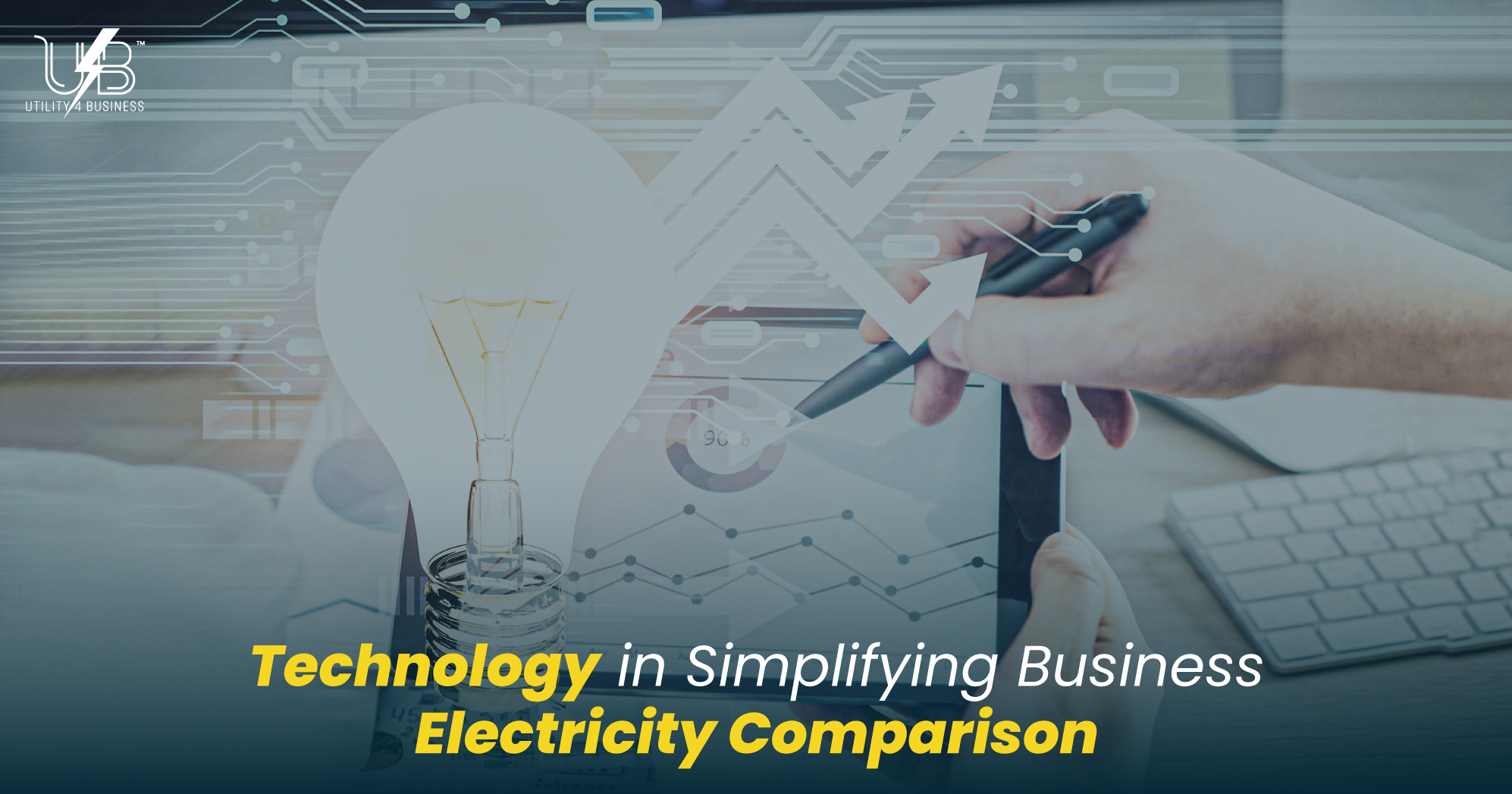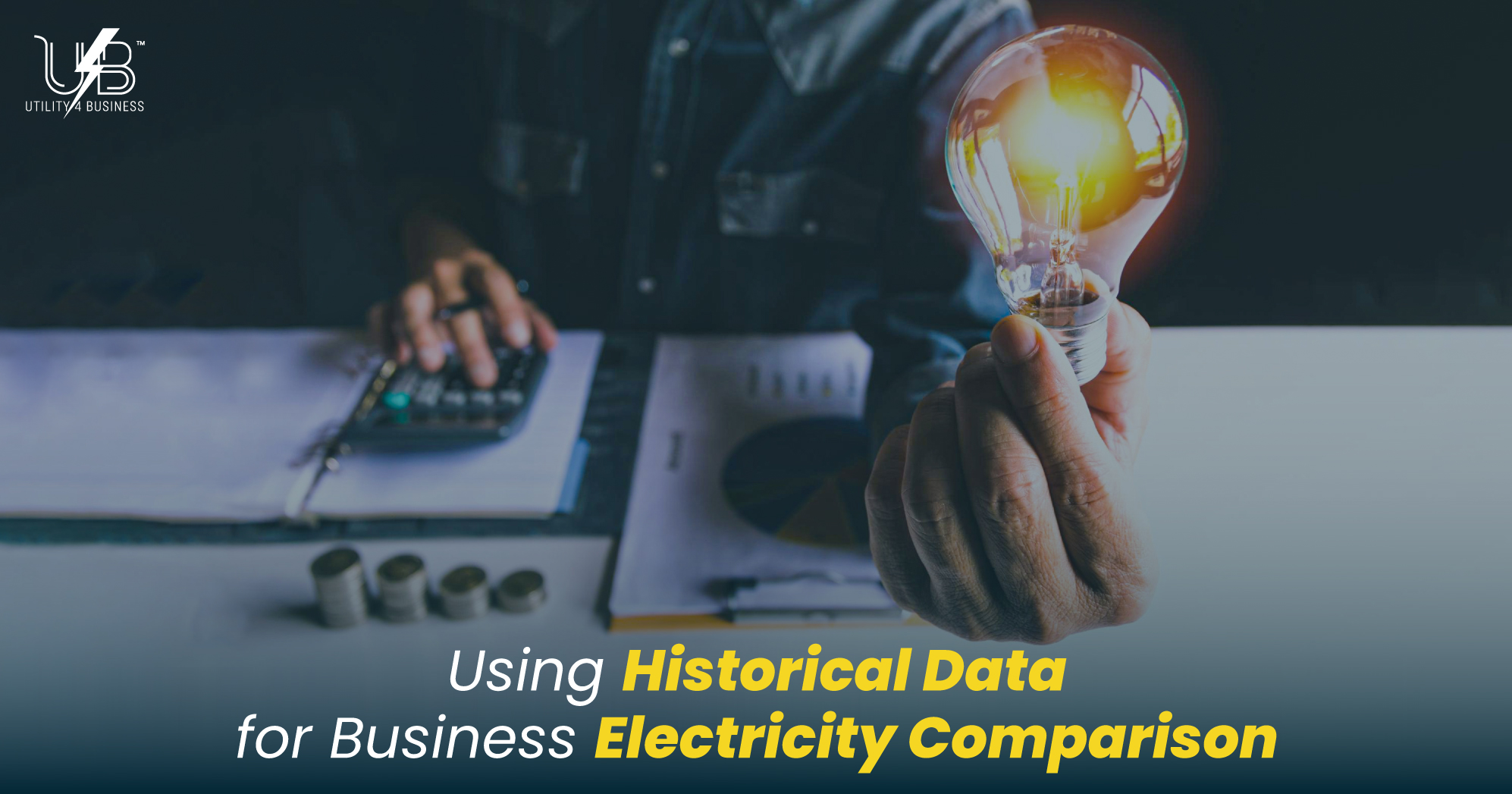Technology in Simplifying Business Electricity Comparison
Tech That Lowers Your Power Bill

Choosing a business electricity contract used to mean juggling quotes, spreadsheets, and phone calls. Tariffs changed fast, contract terms varied, and the small print hid costs that later hit the bill. Technology has changed that journey. Smart data, secure connections, and practical software now remove guesswork and bring clear choices to the screen. That shift matters for any company that wants lower costs, stable budgeting, and less admin time. The goal is not only to find a good price but to select a contract that fits the way a site uses power across the day and across the year. This article explains how modern tools streamline business electricity comparison, how to use them well, and how Utility4Business puts these tools to work for UK companies.
Why is business electricity comparison hard
Electricity costs depend on how and when a site uses energy. Unit rates, standing charges, contract length, and pass-through items all shape the bill. Meter type adds more variation, because a half-hourly meter records detailed usage while a non-half-hourly meter relies on estimates. Credit checks, region, and climate patterns also play a role. Many firms change their usage over the year, so a quote based on a single month can be misleading. Add broker fees or hidden extras and the task grows complex. This is why a business energy comparison needs accurate data, clear quote breakdowns, and a simple path from options to contract.
The tech stack behind modern comparisons
Behind a clean results page sits a quiet stack of systems. Meter data feeds show how much power a site used every half hour. Bill parsing software extracts unit rates and fees from PDFs and spreadsheets. APIs pull live tariff information and contract rules from suppliers. Forecast models test how different contract terms would perform for the site’s unique load shape. Carbon data services show the grid’s expected emissions, which helps a firm align cost savings with sustainability aims. The result is a fast, repeatable, and transparent process that makes a compare business electricity task feel straightforward.
Smart and advanced meters
Granular data is the core of accurate quotes. Smart and advanced meters record usage every 30 minutes and send the information through secure channels. That level of detail shows peaks and dips during working hours, at night, and on weekends. It highlights demand from heating, cooling, ovens, server rooms, or charging bays. With half-hourly data, a pricing engine can match tariffs to the real load shape, which removes guesswork and improves the quality of quotes. It also reduces bill shock because contract rates reflect the way power is actually used. For sites that still use basic meters, an upgrade unlocks better contract options and makes commercial electricity comparison more reliable.
Data access is opening up
A strong comparison journey requires safe and lawful access to energy data. Modern platforms request consent from the business, confirm meter details, and fetch readings through approved channels. This process protects privacy and creates a full audit trail. As the UK market improves data sharing and meter reliability, more firms can pull consistent half-hourly reads for pricing, bill checks, and usage reports. Better access means faster quotes, fewer manual steps, and a clear record of how numbers were produced. That supports finance teams, auditors, and leadership.
APIs and open data
Application programming interfaces APIs connect comparison tools to market inputs without manual work. These inputs include regional charges, standing charges, unit rate bands, contract rules, and green content. Carbon intensity feeds add another layer, showing when the grid runs cleaner or heavier. With these elements in one place, a platform can propose tariffs that fit the site’s usage pattern and sustainability plan. This approach does more than save time; it aligns the business electricity price comparison with real operating goals, such as reducing costs during peak times or shifting flexible loads to cheaper hours.
AI in business energy comparison
Artificial intelligence improves both speed and accuracy. Optical character recognition turns past bills into structured data. Models detect unusual fees or missing credits. Clustering groups similar load profiles and matching them with tariff types that have historically performed well for that pattern. Forecasting models project usage under different scenarios, such as a longer workday, a new cold room, or planned EV chargers. These tools reduce human error and surface choices that might otherwise be missed. The best part is clarity: numbers on the screen line up with how the site runs day to day, which lifts confidence in the chosen contract.
Platforms that create faster quotes and clearer decisions
A strong platform guides the business through a few simple steps. It confirms address and meter details, ingests a recent bill, and pulls half-hourly data with consent. It then runs multiple scenarios in seconds. Side-by-side results show unit rates, standing charges, any pass-through items, contract term, green content, and exit fees. Finance teams can export the quote pack and see how the recommendation compares with what the business pays today. Nothing hides behind vague labels. This level of transparency turns a compare business electricity rates task into a quick, documented process.
Automation after the switch
The work does not end at the signature. Good software tracks contract end dates and triggers reminders well before renewal. It watches usage and flags gaps against expected patterns. If a site adds new equipment or changes hours, the system can suggest a review. Alerts help managers act early, not after costs rise. Regular checks against live market data show whether better options exist. This cycle of monitor, alert, and re-quote keeps savings on course across the full contract term.
A data-first workflow without the friction
A reliable process starts with good inputs. The business gathers a recent bill and confirms meter and site details. The platform connects to the meter, pulls half-hourly reads, and checks for gaps. It runs at least three pricing scenarios across different contract lengths and tariff types. Each scenario shows a projected annual cost and a breakdown of charges. Where sustainability goals exist, the platform overlays carbon and suggests operational shifts that can deliver savings. The finance team reviews the results, requests clarifications if needed, and approves the preferred option. The system then manages onboarding steps and sets renewal alerts. This makes business electricity comparison repeatable and easy to audit.
Risks and gaps
Data gaps can still occur. Poor signal at the meter, delays in reads, or missing bill pages can slow a quote. A good platform handles gaps by estimating sensibly and flagging what it changed, rather than hiding the issue. Another risk is unclear commissions or fees. Clear itemisation fixes this. The market also continues to refine standards for smart meter service, data access, and complaint handling, which strengthens outcomes for small and medium firms. The direction of travel is the same as the goal of the business user: faster, clearer, and more accurate results from a business energy comparison.
Conclusion
Technology has reshaped business electricity comparison from a manual task into a simple, transparent workflow. Smart meters provide accurate data. APIs and secure data sharing deliver live inputs without manual effort. AI turns raw numbers into clear options tied to a site’s real load shape. The result is faster decisions, better control over costs, and stronger support for sustainability. With the right process, a company can select a contract that works for its operations rather than fighting with the bill later. Utility4Business applies this full approach for UK companies. The process starts with a recent bill and meter details, moves through secure data connections, and produces clear, side-by-side options that reflect the site’s true usage.
Find This Article Helpful? Share It Now!
At Utility4Business, we offer top-notch customer support and business utility solutions for businesses across the UK. Consider sharing this article and helping others discover how our expertise can add value to their business success.

Read Our Latest Posts
Explore our latest blog posts and learn how Utility4Business can support your business growth with tailored utility solutions and services. Stay ahead of the curve with the latest information from industry experts and take advantage of our user-friendly comparison services to find the best business deals.


Get Connected
At Utility4Business, our team of experts can help you figure out the highest-value business utility deals that will help your business grow over time.

